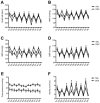Prenatal exposure to dexamethasone in the mouse alters cardiac growth patterns and increases pulse pressure in aged male offspring
- PMID: 23935943
- PMCID: PMC3723833
- DOI: 10.1371/journal.pone.0069149
Prenatal exposure to dexamethasone in the mouse alters cardiac growth patterns and increases pulse pressure in aged male offspring
Abstract
Exposure to synthetic glucocorticoids during development can result in later cardiovascular and renal disease in sheep and rats. Although prenatal glucocorticoid exposure is associated with impaired renal development, less is known about effects on the developing heart. This study aimed to examine the effects of a short-term exposure to dexamethasone (60 hours from embryonic day 12.5) on the developing mouse heart, and cardiovascular function in adult male offspring. Dexamethasone (DEX) exposed fetuses were growth restricted compared to saline treated controls (SAL) at E14.5, but there was no difference between groups at E17.5. Heart weights of the DEX fetuses also tended to be smaller at E14.5, but not different at E17.5. Cardiac AT1aR, Bax, and IGF-1 mRNA expression was significantly increased by DEX compared to SAL at E17.5. In 12-month-old offspring DEX exposure caused an increase in basal blood pressure of ~3 mmHg. In addition, DEX exposed mice had a widened pulse pressure compared to SAL. DEX exposed males at 12 months had an approximate 25% reduction in nephron number compared to SAL, but no difference in cardiomyocyte number. Exposure to DEX in utero appears to adversely impact on nephrogenesis and heart growth but is not associated with a cardiomyocyte deficit in male mice in adulthood, possibly due to compensatory growth of the myocardium following the initial insult. However, the widened pulse pressure may be indicative of altered vascular compliance.
Conflict of interest statement
Figures





References
-
- de Boo HA, Harding JE (2006) The developmental origins of adult disease (Barker) hypothesis. Aust N Z J Obstet Gynaecol 46: 4–14. - PubMed
-
- Moritz KM, Singh RR, Probyn ME, Denton KM (2009) Developmental programming of a reduced nephron endowment: more than just a baby's birth weight. Am J Physiol Renal Physiol 296: F1–9. - PubMed
-
- Corstius HB, Zimanyi MA, Maka N, Herath T, Thomas WG, et al. (2005) Effect of intrauterine growth restriction on the number of cardiomyocytes in rat hearts. Pediatr Res 57: 796–800. - PubMed
-
- Moritz KM, De Matteo R, Dodic M, Jefferies AJ, Arena D, et al. (2011) Prenatal glucocorticoid exposure in the sheep alters renal development in utero: implications for adult renal function and blood pressure control. Am J Physiol Regul Integr Comp Physiol 301: R500–509. - PubMed
Publication types
MeSH terms
Substances
LinkOut - more resources
Full Text Sources
Other Literature Sources
Medical
Research Materials
Miscellaneous

